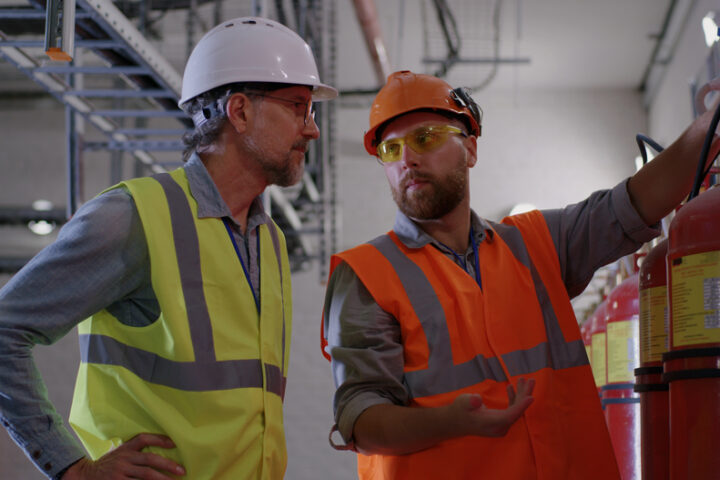In any workplace, safety should always be a top priority. A well-organized and maintained environment not only reduces hazards but also boosts efficiency and morale. One of the most effective ways to maintain workplace cleanliness and safety is by implementing a 5S cleaning station. This system ensures that cleaning tools are easily accessible, promoting a culture of tidiness, responsibility, and compliance with safety regulations.
The Role of Cleaning Stations in Workplace Safety
Cleaning stations are designated areas where essential cleaning tools and supplies are stored. These stations play a crucial role in maintaining hygiene, preventing accidents, and ensuring that workplaces remain compliant with safety regulations. Whether in a manufacturing facility, office space, or warehouse, having a structured approach to cleaning improves both safety and productivity.
1. Reducing Workplace Hazards
Slips, trips, and falls are among the most common workplace injuries. Spilled liquids, accumulated dust, and misplaced tools create unnecessary risks. A well-maintained cleaning station provides quick access to the right tools to address these hazards immediately. Employees can quickly clean up spills, remove debris, and ensure pathways remain clear, significantly reducing the likelihood of accidents.
2. Promoting a Clean and Organized Work Environment
A clutter-free workspace is a safer workspace. Cleaning stations encourage employees to take responsibility for maintaining cleanliness, ensuring that tools, equipment, and work areas are kept in order. When cleaning supplies are readily available, workers are more likely to clean as they go, preventing messes from accumulating.
3. Ensuring Compliance with Safety Regulations
Regulatory bodies such as OSHA (Occupational Safety and Health Administration) have strict guidelines regarding workplace cleanliness and safety. Cleaning stations help businesses meet these standards by providing a structured approach to sanitation. Regular cleaning not only enhances compliance but also demonstrates a company’s commitment to maintaining a safe work environment.
The 5S Methodology and Cleaning Stations
The 5S system—Sort, Set in Order, Shine, Standardize, and Sustain—is a proven workplace organization method that aligns perfectly with cleaning stations. Here’s how it works:
- Sort: Remove unnecessary items from the workplace to reduce clutter.
- Set in Order: Organize cleaning tools in designated areas for easy access.
- Shine: Keep the workplace clean and conduct regular inspections.
- Standardize: Establish routines and best practices for workplace cleanliness.
- Sustain: Maintain and continuously improve cleaning habits to ensure lasting benefits.
By integrating cleaning stations within the 5S methodology, companies create a systematic approach to workplace safety and efficiency.
Key Components of an Effective Cleaning Station
To maximize the benefits of a cleaning station, it’s essential to include the following components:
- Proper Storage: Use wall-mounted racks, labeled bins, and tool shadow boards to keep cleaning supplies organized.
- Accessible Location: Position cleaning stations in high-traffic areas where they can be easily accessed by all employees.
- Quality Cleaning Tools: Stock up on durable mops, brooms, disinfectants, and spill kits tailored to the workplace’s specific needs.
- Clear Signage: Use visual cues and labels to indicate where each item belongs, making it easy to find and return tools after use.
- Regular Maintenance: Conduct routine checks to ensure cleaning tools are in good condition and replenished when necessary.
Benefits of Implementing Cleaning Stations in the Workplace
1. Increased Productivity
A clean and organized workspace enhances efficiency. When employees spend less time searching for cleaning supplies, they can focus more on their tasks. Moreover, a tidy work environment reduces distractions and promotes a sense of order, leading to improved workflow and productivity.
2. Improved Employee Morale
A well-maintained workspace creates a more pleasant and professional atmosphere. Employees feel more comfortable and take greater pride in their work when their surroundings are clean and safe. A positive work environment also leads to higher job satisfaction and lower turnover rates.
3. Lower Costs and Fewer Liabilities
Accidents and workplace injuries result in financial losses due to medical expenses, legal fees, and lost productivity. Investing in proper cleaning stations helps mitigate these risks, ultimately saving businesses money. Additionally, companies that adhere to safety regulations avoid costly fines and penalties associated with non-compliance.
4. Environmental Responsibility
A well-managed cleaning station can contribute to sustainability efforts by incorporating eco-friendly cleaning products and waste reduction practices. Companies that prioritize green cleaning solutions not only help the environment but also enhance their corporate social responsibility (CSR) initiatives.
How to Implement a Cleaning Station in Your Workplace
Setting up a cleaning station is a straightforward process that can yield significant benefits. Follow these steps to ensure a successful implementation:
- Assess Your Needs: Identify the cleaning challenges in your workplace and determine the necessary supplies.
- Designate Cleaning Areas: Establish cleaning stations in strategic locations to maximize accessibility.
- Stock Up on Supplies: Invest in high-quality cleaning tools and ensure they are well-maintained.
- Train Employees: Educate staff on the importance of cleanliness, proper tool usage, and adherence to safety protocols.
- Monitor and Improve: Regularly review cleaning station effectiveness and make necessary adjustments to enhance efficiency.
Conclusion
Workplace safety and compliance start with cleanliness, and cleaning stations play a pivotal role in achieving both. By integrating the 5S cleaning station approach, businesses can create a safer, more efficient, and regulation-compliant work environment. Investing in well-organized cleaning stations is not just about meeting legal requirements—it’s about fostering a culture of safety, responsibility, and productivity. Whether in an office, factory, or warehouse, having the right cleaning station in place is a small step that makes a significant impact on workplace well-being.







